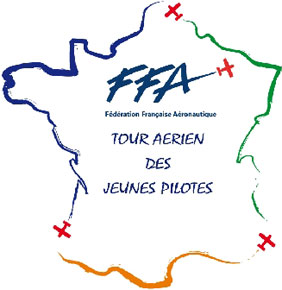An interesting letter arrived at AOPA Headquarters earlier this year from a French organization called the Fédération Française Aéronautique. The letter explained that the FFA represents 41,000 of the 45,000 private pilots in France, and is responsible for overseeing a national network of 600 flying clubs. The FFA’s leaders had become aware of AOPA’s growing interest in flying clubs, and wondered if we would like to share information and ideas.
Several of the AOPA editorial staff had already visited France last year for a magazine story and video shoot about a flying club in the Alps. They returned full of enthusiasm about the whole French flying club scene, so we were pleased to have the opportunity to learn more.
And so it was that last month Jean-Luc Charron, Vice President and Treasurer of the FFA, stopped in to see us at Frederick. It was an excellent meeting. We’re just getting started in our efforts to promote flying clubs on a nationwide basis, but the FFA has been doing the same thing since 1929 and it was a great opportunity to absorb their experiences. Here’s a quick summary of what we learned.
 The French flying club movement grew strongly in the 1930s as a government-sponsored initiative, a way to increase the nation’s pool of aviation resources in response to the rise of Nazi Germany. Government support remained strong for a while after the war, but this has declined and today less than 5% of the FFA’s funding comes from the national government. The biggest benefit that remains is a program that makes government loans available to clubs on favorable terms, very handy for new aircraft purchases.
The French flying club movement grew strongly in the 1930s as a government-sponsored initiative, a way to increase the nation’s pool of aviation resources in response to the rise of Nazi Germany. Government support remained strong for a while after the war, but this has declined and today less than 5% of the FFA’s funding comes from the national government. The biggest benefit that remains is a program that makes government loans available to clubs on favorable terms, very handy for new aircraft purchases.
All 600 clubs in the French network are fully independent, affiliated to the FFA but responsible for their own decisions, operations, budgets, etc. They operate on a non-profit basis and club members pay dues, and for flight time, in ways that would be familiar to most clubs in the USA.
Nobody in the whole of France lives more than 40 miles from their nearest flying club and the FFA network contains 41,000 pilots and 2,416 airplanes, flying slightly more than 600,000 flight hours per year. So that means the average French club contains 68 pilots and 4 airplanes (17 members per plane), and flies roughly 1,000 hours per year.
That’s quite close to the profile of the average US club; but we saw some differences too. For example, there is a strong culture of volunteer flight instruction in the French clubs; more than 95% of flight instructors do not charge for their time. But the overall hourly cost of flying is much higher, club rates are easily 50 percent to 100 percent more expensive than comparable aircraft in the USA.
About 40 percent of hours flown in the network are for flight training, and the French clubs are currently generating new pilots at the rate of 2,000 per year (roughly 3-4 new pilots per club, per year).
Some of the most common aircraft seen in French flying clubs are virtually unknown in the USA. More than 700 of the cranked-wing, 4-seat Robin DR400 are operated by French clubs, along with numerous Jodels and Rallyes. There are about 400 Cessnas and 200 Pipers in the fleet, and a growing number of Diamond and Cirrus aircraft. The composite 2-seat APM 20 “Lionceau” has been very popular in recent years. It looks very much like an LSA-category aircraft, and more than 100 of them have been acquired by French flying clubs since the airplane was introduced in 1999.
For several years the FFA has been conducting a major initiative to work with the flying clubs to bring young people into aviation. A multilevel program is in place with the end objective of getting young people into the air. There has been some considerable success in this area and today, 11 percent of FFA club membership is under the age of 21 (I believe the equivalent number in the USA is well below 5 percent).
One direct outcome of our meeting with Jean-Luc Charron was the opportunity to send a young American pilot on the trip of a lifetime. Every two years the FFA sponsors an event called the Tour Aérien Des Jeunes Pilotes, a two-week air rally that hops from club to club across France. FFA kindly offered one of the coveted spots to AOPA, and we selected Jennifer Guetterman of Anaheim, CA from more than 80 applications received. Jennifer has promised to write a report of her experiences for a future edition of Club Connector. The concept of a rally based around flying clubs is an interesting one, we should keep that in mind for the USA.
I’d like to thank the FFA and Jean-Luc Charron for being so generous with their time and experiences, we hope our initial meeting can be the start of a productive relationship between our two countries, and our two flying club communities, in the years ahead.